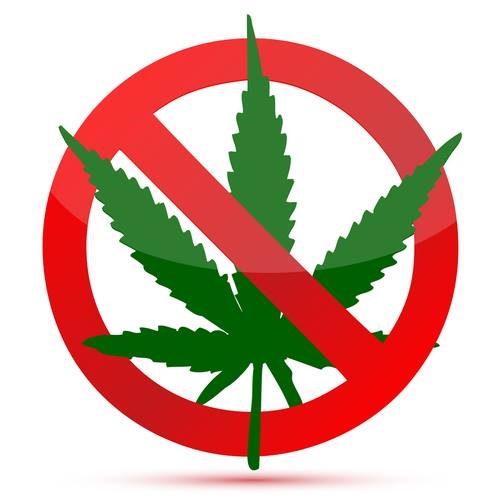There is no debate that the prevalence and acceptance of marijuana use are on the rise in the United States. Many states have approved the use of marijuana as a treatment for a variety of medical conditions, but there is no consistency or agreement across state lines as to what it should be used for, how it should be delivered or potency, which is becoming a problem particularly with edible products. Most of the available studies for marijuana as a treatment for pain used well-researched natural products that are not available in the United States or synthetic products. The conditions most commonly evaluated have been cancer or neuropathic pain, with small, short-duration studies.
There is a paucity of research in the most common pain conditions. According to the “National Ambulatory Medical Care Survey: 2012 State and National Summary Tables,” the most common pain conditions presenting to the primary care physician’s office were knee pain, low back pain and “other” back symptoms, which were the only pain conditions listed in the top 20 diagnoses (www.cdc.gov/?nchs/?data/?ahcd/?namcs_summary/?2012_namcs_web_tables.pdf). There are no large, long-term, controlled studies with marijuana treatment for these conditions.
The Colorado Experience
In Colorado, patients have a tremendous variety of products at their disposal for pain conditions. These products are not highly regulated or controlled, and potentially contain contaminants such as pesticides, fungicides and rodenticides.
There is no limit on dosing or potency. For example, there is no limit to the amount of residual butane in butane hash oil that patients can inhale, and there are no studies as to the benefits of inhaled butane. The available products in Colorado can push the tetrahydrocannabinol (THC) content to nearly 100%. This is significantly greater than the 10% THC available for research. In the state of Colorado, you cannot find any 10% marijuana products, as they are simply not available. Colorado has reached the point that the average THC content forsmoked marijuana is over 17%, and 50% for marijuana hash oil products, although many products much more potent than that are available for patients. One ounce of THC oil is the equivalent of 2,800 edible products, which have 10 mg of THC each (http://m.gazette.com/?clearing-the-haze-thc-extracts-concentrate-problems/?article/?1554097).
Many marijuana patients grow their own product, but are not allowed to have their product tested for potency or contaminants. Despite the reports that states with medical marijuana programs make a lot of money off them, they do not benefit from any of the hundreds of home grows across the state of Colorado, which has led to a significant rise in the black market, including cartels (http://gazette.com/?more-than-12000-pounds-of-marijuana-seized-in-massive-southern-colorado-raid/?article/?1586596). The health care costs with this new industry will be equivalent to the alcohol and tobacco industries, which generate a lot of money, but not in comparison to their health effects and costs.
Although some reports suggest a decrease in opioid use in marijuana states, in Colorado the CDC noted that drug poisoning deaths were at an all-time high in 2014 in almost every county in the state, with data going back to 1999 (https://data.cdc.gov/?NCHS/?NCHS-Drug-Poisoning-Mortality-U-S-and-State-Trends/?jx6g-fdh6). This contradicts those studies showing fewer deaths in marijuana states. It is completely understandable to look at ways to decrease opioid deaths by supplementing with adjunctive cannabis; however, negative societal effects are being noted in Colorado, with a massive influx of “marijuana refugees” descending upon the state. The city of Pueblo has been particularly hit hard by the influx of homeless reporting they move because of the ease of access to marijuana for both medical and recreational use (www.posadapueblo.org/?images/?PowerPointPresentations/?Posada-MJ-Brief-September-28-2016-for-Print.pdf).
Blurred Lines, or Nonexistent?
Since legalization, the lines between medical and recreational marijuana have blurred to the point where they simply cease to exist. Patients freely share their “medicine” with family and friends, and parents are self-diagnosing, and subsequently dosing their children with high-concentration marijuana products for conditions that may simply not exist (attention-deficit/hyperactivity disorder, anxiety, etc.); or allow their medical cards to expire and continue to grow their own.
Although the idea of rescheduling cannabis to Schedule II seems reasonable and attractive, it will likely wreak havoc on the marijuana industry. If rescheduled, the product will need to be dispensed through a pharmacy window, not grown at home like a crop in conditions not conducive to growing crops (drywall, commercial lighting and venting, energy consumption, etc.). We need to support the ongoing research that may one day give us the evidence to treat our patients with medical marijuana.
The use of marijuana for medical conditions, including pain, needs robust studies, and subsequent products need more regulation and consistency for public consumption. Colorado is an example of the societal effect across a wide spectrum of arenas that comes with rampant cannabis use, particularly in youth use and impaired driving fatalities (www.rmhidta.org/?html/?2016%20FINAL%20?Legalization%20?of%20?Marijuana%20?in%20?Colorado%20?The%20?Impact.pdf). The problems Colorado is seeing completely transcend “responsible use” or “marijuana as medicine.”

